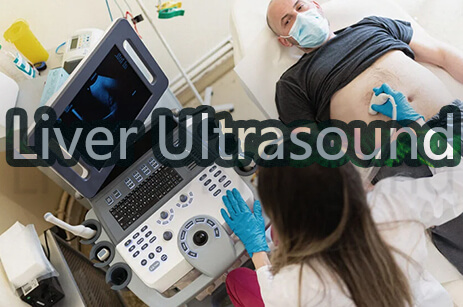The global number one killer is a heart problem, ischemic heart disease. This heart disease presents in narrowed heart arteries that limit the flow of blood and oxygen into the heart, and it can cause a heart attack. Sadly, ischemic disease causes about 16% of annual global deaths.
While ischemic heart disease is not our primary topic in this write-up, mentioning it here emphasizes how important it is that your heart pumps blood as it should. Knowing your cardiac output is core for clinicians to know if your heart is working as it should.
So, exactly what is cardiac output, and how do you measure it? When is cardiac output normal, and what are the determinants of cardiac output?
You’ll find easy-to-understand answers to these and other questions related to cardiac output in this article. Let’s begin with the basics: What is cardiac output?
What Does Cardiac Output Mean?
In the simplest terms,
cardiac output is how much blood your heart pumps to send to the rest of your body organs in one minute. It is recorded in liters per minute (L/min).
Let’s break that down further.
When your heart beats, it sends blood to the rest of your body. The amount of blood that goes from your heart with each heartbeat is known as
stroke volume. But your heart also beats a certain number of times in one minute, and that’s
heart rate.
So, by the time a minute passes, the number of heartbeats that happen in that minute will have sent several liters of blood from your heart.
The number of liters sent from your heart with each heartbeat in a minute is what is known as cardiac output. That’s why you will hear that cardiac output depends on heart rate and heart stroke.
In the clinical setup, your doctor is the person most interested in cardiac output and uses it for these three purposes:
- To check if your cardiac output is at the normal rate or not, which could be indicative of a heart problem.
- To find out if a prescribed heart treatment is working as intended.
- To look for signs of heart failure or other heart-related health problems.
From a general health perspective, the amount of blood your heart pumps also determines if enough oxygen and nutrients are getting to your body cells. Besides, one of the
functions of blood is to get rid of body wastes, including the carbon dioxide waste from blood cells. As such, an impaired cardiac output can be a threat to your health and life.
That raises the question of what is the normal cardiac output. But before answering that, let’s look at the determinants of cardiac output.
What are the 4 Determinants of Cardiac Output?
Every clinician and healthcare practitioner knows that there are four determinants of cardiac output:
- Heart rate
- Contractility
- Preload
- Afterload
These are the factors that, in the long run, determine how much blood your heart pumps in one minute.
However, explaining and understanding how these factors affect cardiac output is not easy. So, let’s break them down to help you understand how they define cardiac output.
I already mentioned that heart rate describes the number of times your heart beats in a single minute.
When you are resting, your heart is more at ease and beats at a relaxed rate. But when you run or exercise, your heart beats faster to supply the blood (and, therefore, the oxygen) required for the exercise.
The faster your heart rate, the more the blood that’s pumped from your heart.
But your heart is a machine, and like other body organs, it can tire from pumping blood too fast. If this happens consistently, the heart muscle is damaged, compromising normal heart functioning. The resulting abnormal heart rhythm can lead to
heart failure.
In the same way, an extremely low heart rate, as in the case of
Bradyarrhythmia means too little blood pumped from the heart to the rest of the body and is also dangerous to health.
In relation to cardiac output, a low heart rate will mean a lower cardiac output, and a higher heart rate, a higher cardiac output.
Nonetheless, heart rate is not the only determinant of cardiac output. So, let’s look at the other three.
There’s more to cardiac contractility than we can include in this post. But to make it simple, cardiac contractility refers to
the ability of the heart to contract and, consequently, pump blood.
The cross-bridge speed of the microfilament and the intracellular calcium concentration determine the extent of contractility. In
Franck-Starling’s law, the more a heart muscle stretches, the more calcium is released, causing increased contractility.
Low contractility reduces cardiac output, while high contractility increases it. But, like heart rate, impaired contractility leads to heart problems.
In relation to the other predictors of cardiac output, cardiac contractility refers to the ability of the heart to complete a stroke volume at a specific preload and afterload. Now, let’s find out what is preload and afterload.
Preload, or in alternative medical terms, left ventricular end-diastolic pressure (LVEDP), is
the measure of the stretch of the ventricles (heart chambers) when the heart completes diastole (the relaxing of the muscles to allow the heart chambers to fill with blood).
From a different perspective, it is the stretch of the ventricles when the heart is ready for systole (the contraction of the ventricles to cause blood ejection from the heart).
In relation to cardiac output, the greater the stretch of the muscles when diastole completes, the greater the force of contraction in systole, which means higher cardiac output, and vice versa.
When the heart sends blood to the body through the arteries, it encounters a certain blood pressure and vascular tone (the rate of constriction of the muscle cells in the artery walls in relation to their maximum dilation).
Both blood pressure and vascular tone create
a certain force in the blood arteries that the heart has to work against to eject blood. This force is what we refer to as afterload.
Decreased afterload creates the conditions for a higher cardiac output. Instead, increased afterload means a lower cardiac output because the heart has to work against the high force in the blood arteries to eject blood. Think of it as a flying object acting against the wind.
It’s worth noting that individual-related factors can also affect cardiac output. These include:
- Older age.
- Heart damage from previous heart attack(s).
- Other heart-related conditions such as high blood pressure, abnormal heart rhythm as in the case of atrial fibrillation, and narrow aortic valve (aortic stenosis).
With these determinants of cardiac output, the next obvious question is how exactly is cardiac output measured.
How is Cardiac Output Measured?
You’ve probably heard someone ask, “What is the cardiac output equation?”
From what we’ve said so far, the obvious answer to that question is this:
Cardiac Output (CO) =Heart Rate (HR) x Stroke Volume (SV)
Hеrе arе a fеw othеr kеy mеasurеmеnts your OB ultrasound tеch (ob ultrasound tеch) might takе:
This equation is used with one of the methods for measuring cardiac output known as
echocardiography.
Specifically,
Doppler echocardiography is used to determine heart rate and stroke volume and, the figures from the two factors are multiplied to obtain cardiac output in liters per minute.
But echocardiography is not the only method your doctor can use to determine cardiac output. Below are 2 other ways to measure cardiac output:
- Arterial pulse waveform analysis: Includes a range of methods used to roughly calculate cardiac output by examining the pressure wave pattern of blood in the arteries. Blood pressure waveform points to physiological factors related to cardiac output, including the left ventricular stroke volume and vascular resistance.
- Pulmonary artery catheter: This is a thermodilution technique where the physician inserts a catheter into the right atrium and introduces an amount of D5W intravenous sugar solution at room temperature. The doctor then notes the change in blood temperature over time to determine cardiac output.
After the procedures in these methods, your doctor can tell if your cardiac output is normal or not. So, when is cardiac output normal?
What is the Normal Cardiac Output?
Normal cardiac output records a value of 5-6L/min when resting. When exercising, your cardiac output can be three to four times higher. Elite athletes can record up to 35L/min when exercising.
But, those with particular health issues can record a low cardiac output, meaning their heart does not pump enough blood to supply the required amount of blood and oxygen to the body cells.
Although there isn’t a common definition agreed upon by researchers and clinicians for low cardiac output, some health conditions are considered key triggers:
- Severe heart damage.
- Excessive bleeding following an injury or surgery.
- Severe sepsis
People with low cardiac output will show the following symptoms:
- Feeling consistently fatigued.
- Not enough energy for physical work or exercise.
- Swollen legs and arms.
- Trouble breathing.
- Nausea and vomiting.
- Abdominal pain or discomfort.
As a precaution, you should not rely on these symptoms to auto-diagnose yourself for low cardiac output. Instead, talk to your doctor or healthcare provider and get the necessary tests done.
Consider that low cardiac output is also indicative of a failing heart.



